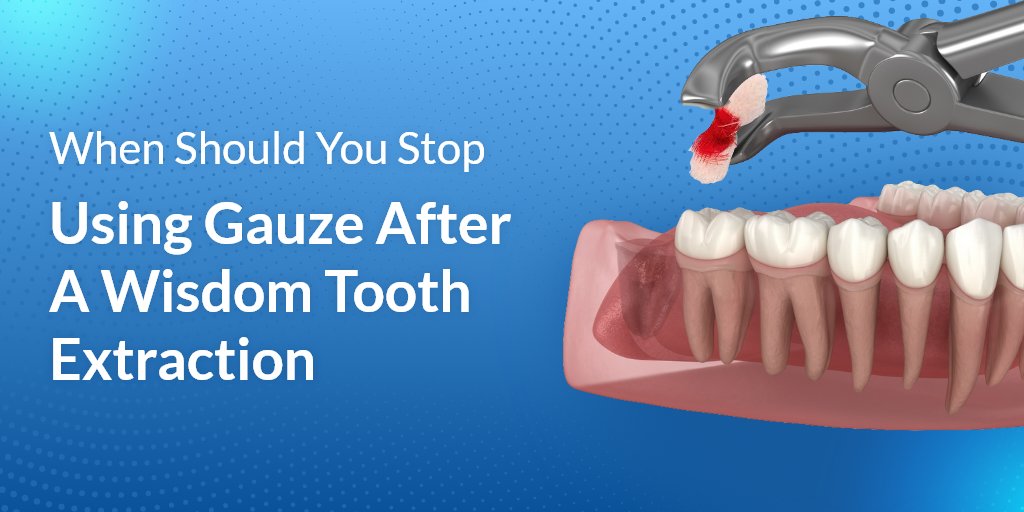
How Long Should I Have Gauze In After Tooth Extraction: Tips
After a tooth extraction, many wonder: How long should I have gauze in? The answer is crucial: to control bleeding, keep the gauze in place for about 30-45 minutes. Changing it as needed will aid in the healing process. Understanding the correct duration ensures a smoother recovery. So, let’s delve into the details on how long should I have gauze in after tooth extraction.
How Long Should I Have Gauze In After Tooth Extraction
The Importance of Gauze After Tooth Extraction
After a tooth extraction, it’s crucial to take proper care of the extraction site to promote healing and prevent complications. One essential component of post-extraction care is the use of gauze to control bleeding and protect the wound.
When to Use Gauze
Once the tooth has been extracted, your dentist will place a piece of gauze over the extraction site to help stop the bleeding. It’s important to keep the gauze in place for a specific amount of time to allow the blood to clot and kickstart the healing process.
Immediate Post-Extraction Period
In the immediate aftermath of a tooth extraction, it’s common to experience bleeding from the extraction site. This bleeding is a natural part of the healing process as your body works to form a blood clot in the empty socket. The gauze helps to absorb the blood and promote clotting.
Duration of Gauze Use
The general guideline for how long you should keep gauze in after a tooth extraction is about 30-45 minutes. During this time, it’s essential to bite down gently but firmly on the gauze to apply pressure to the extraction site. This pressure helps control bleeding and encourages clot formation.
Changing the Gauze
After the initial 30-45 minutes, you may need to change the gauze if it becomes soaked with blood. When changing the gauze, gently remove the old piece and replace it with a fresh one. Remember to bite down on the new gauze to maintain pressure on the extraction site.
Frequency of Gauze Changes
Depending on the extent of bleeding, you may need to change the gauze every 30-45 minutes for the first few hours after the tooth extraction. As the bleeding subsides, you can gradually reduce the frequency of gauze changes. It’s essential to follow your dentist’s instructions regarding gauze changes for optimal healing.
Signs That Gauze Can Be Removed
Knowing when to remove the gauze after a tooth extraction is crucial to ensure proper healing. Here are some signs that indicate it may be time to remove the gauze:
Minimal Bleeding
If you notice that the bleeding has significantly decreased or stopped after the initial 30-45 minutes of gauze use, it may be a sign that the blood clot has formed successfully. At this point, you can carefully remove the gauze and allow the clot to mature.
Comfortable Pressure
When you bite down on the gauze, you should feel a comfortable amount of pressure on the extraction site. If the pressure feels excessive or uncomfortable, it may be an indication that the gauze can be removed.
Clot Formation
Before removing the gauze, you can gently peek inside your mouth to see if a blood clot has formed in the socket. A mature blood clot is essential for protecting the extraction site and promoting healing.
Post-Gauze Care
Once the gauze has been removed, there are essential steps to follow to ensure proper healing and reduce the risk of complications:
Oral Hygiene
It’s crucial to maintain good oral hygiene after a tooth extraction. However, be gentle around the extraction site to avoid dislodging the blood clot. You can rinse your mouth with warm salt water to keep the area clean.
Strenuous Activities
Avoid strenuous activities and exercise for the first 24 hours after the tooth extraction to prevent dislodging the blood clot. It’s essential to rest and allow your body to focus on the healing process.
Follow-Up Care
Attend any follow-up appointments scheduled by your dentist to monitor the healing progress. If you experience excessive bleeding, severe pain, or signs of infection, contact your dentist immediately.
In conclusion, knowing how long to keep gauze in after a tooth extraction is crucial for promoting proper healing and minimizing the risk of complications. By following your dentist’s instructions and paying attention to signs of healing, you can ensure a smooth recovery process. Remember to prioritize your oral health and follow post-extraction care guidelines for the best outcomes.
How To Place Gauze Properly | OnlineExodontia.com
Frequently Asked Questions
How long should gauze be kept in after tooth extraction?
After tooth extraction, it is recommended to keep the gauze in place for at least 30-45 minutes. This helps in controlling bleeding and allows a blood clot to form in the extraction site, aiding in the healing process.
Can I remove the gauze earlier than the recommended time?
It is best to follow the dentist’s instructions and keep the gauze in for the suggested duration to ensure proper healing. Prematurely removing the gauze may lead to prolonged bleeding and disrupt the formation of a blood clot.
How often should I change the gauze after tooth extraction?
Change the gauze pad every 30-45 minutes until the bleeding stops. If bleeding persists, continue changing the gauze at regular intervals to maintain pressure on the extraction site and promote clot formation.
Is it normal to still have bleeding after removing the initial gauze pad?
Some minor bleeding after removing the initial gauze pad is normal following a tooth extraction. If bleeding persists, place a new gauze pad over the extraction site and apply gentle pressure. Contact your dentist if bleeding continues unabated.
Final Thoughts
After a tooth extraction, it is crucial to change the gauze regularly to promote healing. Typically, you should keep the initial gauze in place for about 30-45 minutes after the procedure. Changing it as needed will help control bleeding and prevent complications. Remember, knowing how long should I have gauze in after tooth extraction can enhance your recovery process significantly. You can consult your dentist for personalized advice.


